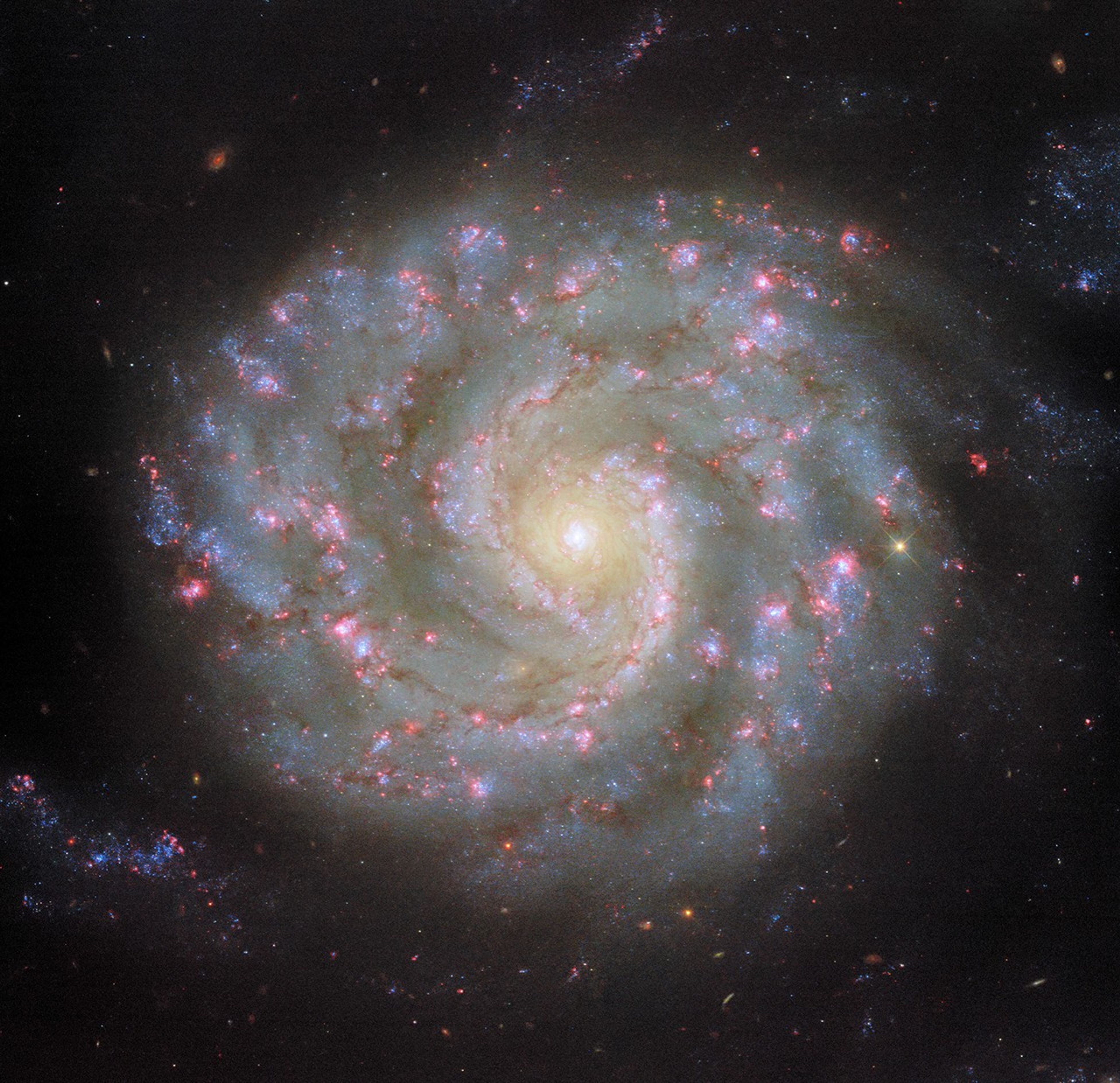- Hubble Home
- Overview
- Impact & Benefits
- Science
- Observatory
- Team
- News
- Multimedia
- More
2 min read

The spiral galaxy NGC 3596 is on display in this NASA/ESA Hubble Space Telescope image that incorporates six different wavelengths of light. NGC 3596 is situated 90 million light-years from Earth in the constellation Leo, the Lion. British astronomer Sir William Herschel first documented the galaxy in 1784.
NGC 3596 appears almost perfectly face-on when viewed from Earth, showcasing the galaxy's neatly wound spiral arms. These bright arms hold concentrations of stars, gas, and dust that mark the area where star formation is most active, illustrated by the brilliant pink star-forming regions and young blue stars tracing NGC 3596's arms.
What causes these spiral arms to form? It's a surprisingly difficult question to answer, partly because spiral galaxies are so diverse. Some have clear spiral arms, while others have patchy, feathery arms. Some have prominent bars across their centers, while others have compact, circular nuclei. Some have close neighbors, while others are isolated.
Early ideas of how spiral arms formed stumped astronomers with the 'winding problem'. If a galaxy's spiral arms are coherent structures, its arms would wind tighter and tighter as the galaxy spins, until the arms are no longer visible. Now, researchers believe that spiral arms represent a pattern of high-density and low-density areas rather than a physical structure. As stars, gas, and dust orbit within a galaxy's disk, they pass in and out of the spiral arms. Much like cars moving through a traffic jam, these materials slow down and bunch up as they enter a spiral arm, before emerging and continuing their journey through the galaxy.






